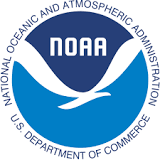04 Giugno 2019
Fonti: Francesco Cozzupoli
NOAA National Oceanic and Atmospheric Administration
https://www.noaa.gov/
Per inciso, in riferimento ad altri contesti relativi al progresso delle conoscenze, da più di vent’ani gli scienziati statunitensi hanno scoperto come l’irraggiamento di tempeste di ioni positivi anticipi i cambiamenti meteo e l’arrivo degli estesi movimenti dei corpi nuvolosi. Oggi così sappiamo che molte persone affette da problemi osteoarticolari e da altre patologie recepiscono, subiscono gli effetti degli ioni negativi già prima dei cambiamenti meteo in loco: grazie alla comprensione di tali dilatati e complessi contesti dinamici, prima che arrivi, come suole dirsi, il cattivo tempo. Sappiamo come tali particolari condizioni meteo e soprattutto le repentinità dei loro cambiamenti incidano pure sullo stato dell’umore. Tutto questo quadro di conoscenze nell’ambito sanitario è da riferire primariamente alla diagnostica psicologico-psichiatrica? Cosa pensa e cosa dice il superbo Consiglio Superiore di Sanità italiano, esclusivo interprete dei suoni emessi dalla bocca della verità?
Earthquakes – 2001-2015
Check out this new SOS dataset of all the earthquakes from 2001 through 2015 from the US NWS Pacific Tsunami Warning Center! You can read about it here: http://sos.noaa.gov/Datasets/dataset.php?id=643
Pubblicato da NOAA Science On a Sphere su Venerdì 2 dicembre 2016
Description
This animation shows every recorded earthquake in sequence as they occurred from January 1, 2001, through December 31, 2015, at a rate of 30 days per second. The earthquake hypocenters first appear as flashes then remain as colored circles before shrinking with time so as not to obscure subsequent earthquakes. The size of the circle represents the earthquake magnitude while the color represents its depth within the earth. At the end of the animation it will first show all quakes in this 15-year period. Next, it will show only those earthquakes greater than magnitude 6.5, the smallest earthquake size known to make a tsunami. Finally it will only show those earthquakes with magnitudes of magnitude 8.0 or larger, the “great” earthquakes most likely to pose a tsunami threat when they occur under the ocean or near a coastline and when they are shallow within the earth (less than 100 km or 60 mi. deep).
This time period includes some remarkable events. Several large earthquakes caused devastating tsunamis, including 9.1 magnitude in Sumatra (26 December 2004), 8.1 magnitude in Samoa (29 September 2009), 8.8 magnitude in Chile (27 February 2010), and 9.0 magnitude off of Japan (11 March 2011). Like most earthquakes these events occurred at plate boundaries, and truly large events like these tend to occur at subduction zones where tectonic plates collide. Other, much smaller earthquakes also occur away from plate boundaries such as those related to volcanic activity in Hawaii or those related to wastewater injection wells in Oklahoma.
cliccare qui sotto per acceder all’immagine del planisfero NOOA dei terremoti
You can view a YouTube version of this animation here.
Notable Features
- The great majority of earthquakes occur at tectonic plate boundaries.
- The majority of great earthquakes (magnitude 8.0 or larger) are megathrust earthquakes that occur at convergent plate boundaries, also called destructive margins or subduction zones.
- For an earthquake to pose a tsunami hazard it needs to vertically move the seafloor
cliccare qui sotto per accedere alla homepage
NOAA Science On a Sphere


